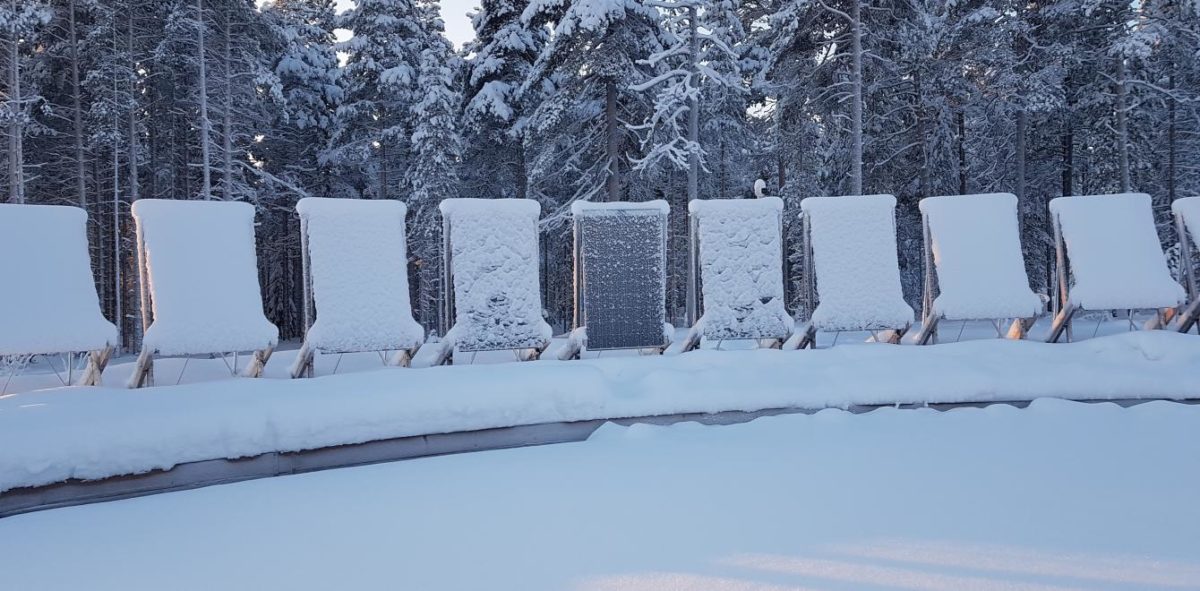Scientists from the Research Institutes of Sweden AB (RISE) are developing a special coating for the cover glass of photovoltaic modules that is claimed to attain low adhesion of snow and ice, high weather and scratch resistance, as well as remarkable light transmittance.
“Our research project is still in an early phase and some testing has not yet started, for example, field testing outdoors, testing of mechanical properties, and testing of ice adhesiveness,” the project manager, Arvid Olofsson, told pv magazine. “However, we plan to proceed with those parts during 2022 and also to explore several different coating technologies, both in the lab and through outdoor experiments.”
The coating technologies that currently are under development and testing are hydrophobic, superhydrophobic and slippery liquid-infused porous surfaces (SLIPS). While the hydrophobic concept relies on a smooth surface, the superhydrophobic effect is achieved through the formation of air pockets between the surface and the snow or ice layer, which requires a suitable surface structure. As for the SLIPS tech, the snow or ice layer is in contact with a lubricant that is held in place by the porous structure in the coating. “Additional coating technologies might be considered at a later stage in the project,” Olofsson added.
According to him, there are pros and cons to all types of coatings. Hydrophobic coatings, for example, are durable and commercially available. However, they have lower performance in terms of ice and snow repellency compared to state-of-the-art coatings. Superhydrophobic coatings have shown the ability to shed ice, but their durability is a challenge.
A disadvantage of superhydrophobic surfaces, for example, is that the surface structure can easily be damaged when it is exposed to abrasion during, for example, ice removal. “If the surface structure is damaged, the superhydrophobic properties are lost and the effect could be reversed so that water drops and ice sit even harder than on an uncoated smooth surface,” the research group emphasized.
As for the SLIPS surfaces, Olofsson they have shown extremely low ice adhesion values in previous research, but the challenge is to resist lubricant depletion with time.
Popular content
The developed coating should exhibit anti-reflective properties to which snow and ice repellent properties will be added without severely impairing the optical properties of the glass cover. “Ideally, the coating should also be chemically and mechanically robust and have a service lifetime that corresponds to that of the PV module,” Olofsson added. “In addition, we will benchmark the developed coatings against two or three commercial coatings, and we will primarily work with glass substrates.”
The goal of the new technology is to halve ice adhesion compared to standard modular glass and ensure 96% light transmittance. “Our aim is that coated modules in operation should not accumulate any snow or ice if installed with a tilt angle of 10 degrees or more,” Olofsson explained, noting that research work will also include optimization of coating thickness and the choice of proper binders and lubricants.
The coatings will be tested outdoors in Norrland, the northernmost region of Sweden, where weather conditions are harsh and the snow load on PV systems can be considerable. “During the winter in Sweden, both the electricity demand and the electricity price are generally higher compared to the summer, which makes winter produced solar electricity particularly valuable,” Olofsson stated.
The research project is being supported by the Swedish Energy Agency Energimyndigheten.
This content is protected by copyright and may not be reused. If you want to cooperate with us and would like to reuse some of our content, please contact: editors@pv-magazine.com.



3 comments
By submitting this form you agree to pv magazine using your data for the purposes of publishing your comment.
Your personal data will only be disclosed or otherwise transmitted to third parties for the purposes of spam filtering or if this is necessary for technical maintenance of the website. Any other transfer to third parties will not take place unless this is justified on the basis of applicable data protection regulations or if pv magazine is legally obliged to do so.
You may revoke this consent at any time with effect for the future, in which case your personal data will be deleted immediately. Otherwise, your data will be deleted if pv magazine has processed your request or the purpose of data storage is fulfilled.
Further information on data privacy can be found in our Data Protection Policy.